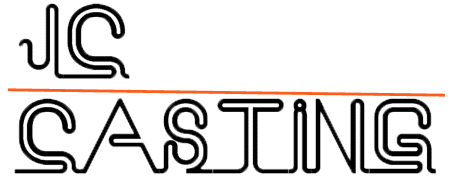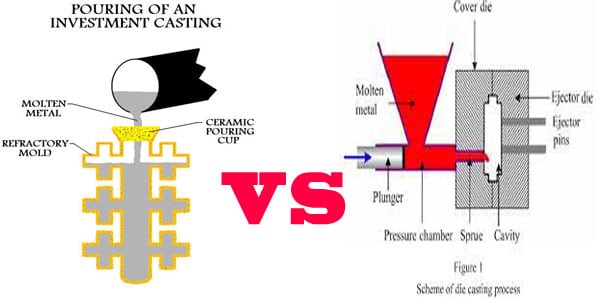Investment Castings Cost
Strictly speaking, the manufacturing costs of different precision investment castings in each process are not exactly the same. However, some details differences are small. It can be calculated on an average basis. What we are concerned about are those factors that have a greater impact on the cost of casting. The 6 main factors that cause the cost difference of the Investment Castings Cost are as follows:
1.Metal Material types
The cost will vary depending on the metal alloy. Among steel castings, stainless steel castings are the most expensive of high stainless steel. Compared to steel castings, cast iron parts are much cheaper due to the lower cost of iron alloys. Of course, for the same material, the cost may vary at different times. Therefore, when the material cost is low, the purchaser will get a cheaper casting.
2. Production technology
Even investment casting parts can be manufactured in water glass investment casting and silica sol investment casting techniques. Silica sol casting will give investment castings better dimensional accuracy and surface finish. So the cost will be higher than water glass casting. Of course, water glass casting is more easily accepted by customers due to its lower production costs. However, if more precise tolerances and surface finishes are required, silica sol casting is preferred.
1) Confirm if the casting can be produced.
Precision casting plants need to check whether the blank casting process can be used to produce blank castings, and some may use wet sand. Some may use resin sand, shell casting, and automatic molding processes. Wet sand is cheaper and shell casting is the most expensive. Relevant factors include dimensional tolerances, surface quality, structural complexity, annual demand, weight and size. These factors will affect the cost of the blank casting. Of course, if these processes fail to meet the requirements, precision castings will not be able to produce them.
2) Confirm whether the processing requirements can be met.
For normal processing work, most of the cast-iron mills with processing capabilities will be able to process internally. Otherwise, they will have to entrust other specialized processing workshops to process. It is not a good choice because the cooperation between precision castings and processing plants may cause more difficulties and delay delivery. Since the quotation needs to take into account the relevant processing equipment, working hours, and prices. Therefore, the processing cost is difficult to calculate. In addition, annual demand is also an important factor affecting processing costs.
3. Casting output
The casting yield is a percentage of the casting weight that the actual weight of the precision casting is.
For a specific precision casting, the yield is equal to the total weight of the precision casting on the same tree as a percentage of the tree weight. It is related to precision cast structures and group tree schemes. It can vary from 30% to 60%, mostly between 40% and 50%. The lower the casting yield, the higher the cost.
The relationship between the cost of the front section and the yield rate is: the cost per kilogram of the front part of the casting = the cost of the previous section of the casting weight per kilogram. The cost of the front section of each kilogram of casting is inversely proportional to the yield. The lower the yield, the higher the cost of the precision casting before the unit weight. And the lower the yield, the more significant the impact.
The cost of pouring the front section of each kilogram of molten steel is 6 yuan. When the yield is 45%, the cost of the front section of each kilogram of precision casting is 13.33 yuan. When the production rate is 30%, the cost of the front part of precision casting is 20 yuan/kg.It is 6.7 yuan higher than the average. The cost increased by 37.6%. The impact on the total cost of 304 stainless steel precision casting was about 17%. When the production rate is 60%, the cost of the front part of precision casting is 10 yuan/kg, which is 3.3 yuan lower than the average level. Process costs are reduced by 18.5%. For 304 stainless steel precision casting, the total cost is reduced by about 7%.
Deriving the cost of the pre-casting section to the yield rate can be concluded: The rate of influence of the yield on the cost of the front section of each kilogram of precision casting is inversely proportional to the square of the process yield. When the yield is 45%, for every one percentage point reduction, the cost per kilogram of precision casting increases by 0.3 yuan. When the yield is 30%, for every one percentage point reduction, the cost of the front section per kilogram of precision casting is increased by about 0.67 yuan. This shows that the impact of the yield on costs is very significant.
On the other hand, some precision castings, especially irregularly shaped thin-walled castings, are difficult to increase due to the limitations of the cast structure and the grouping scheme. This important factor should be taken into account when determining the price of precision casting.
4.Quantity of shell layers
Since the shape of the investment casting is always different. There will be differences in the building construction layer. For more complex structures, more shell layers will be needed, which will cost more. For example, casting with elongated holes or slots requires two or even three layers. It is usually enough to cast the back layer twice. Larger castings may require three or more layers. The cost per kg of precision cast shell is about 5.9 yuan. Among them, material costs accounted for 67.8%, fuel and power accounted for 23.9%, and wages accounted for 13.3%. At the cost of 4 yuan/kg of shell material. The consumption of zirconium sand and zirconium powder accounts for about 63%, accounting for 42.7% of the total cost of shell making. The cost of silica sol is about 12.2% of the cost of the shell. Although zirconium sand zirconium powder is only used for the top layer.
5. Purchasing Area
In China, although labor costs continue to rise, their costs are much lower compared to developed countries. It is very expensive to manufacture investment castings in Europe and the United States.
6. Other Cost Elements
Other costs include packaging costs, surface treatment, painting, inland and sea freight, exchange rates. These costs will be related to the specific needs of the customer.
For more info about why choosing China Investment Casting, please click below the article

